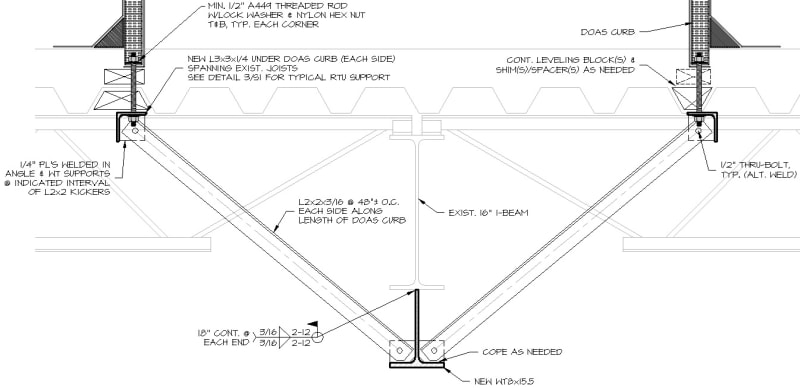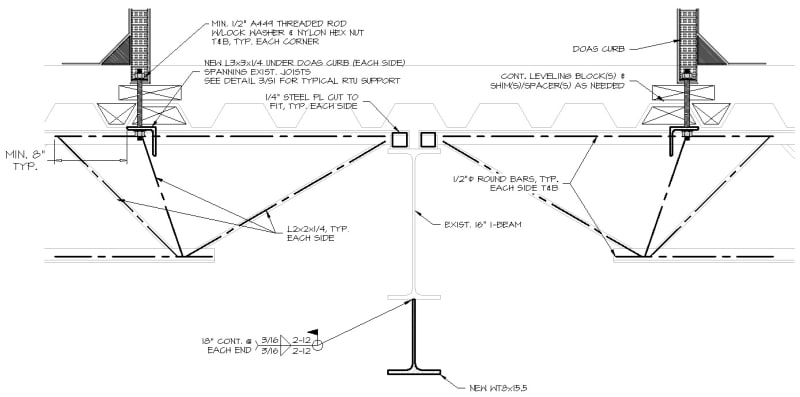CPBe
Structural
- Nov 4, 2019
- 17
Looking for some input on an existing roof structure.
Field-gathered info indicates the existing structure was designed for a 30 psf roof load.
When the added weight of a 3.1k RTU is introduced beam deflection exceeds L/240, so I'd like to reinforce per the following schematic:

Trying to keep the weight off the existing joists (w/kickers down to WT) so that those don't have to be reinforced as well.
Would the WT need to run the full length of the beam to achieve the desired effect? Or is welding the member along the length of the RTU (+/- 2/3 length of the existing beam) enough?
Also, would the ends of the beam (and columns) need to be reinforced as well? Or are the increased shear loads (less than 15%) small enough to negate that?
Any feedback would be greatly appreciated.
Thank you in advance for your input!
Field-gathered info indicates the existing structure was designed for a 30 psf roof load.
When the added weight of a 3.1k RTU is introduced beam deflection exceeds L/240, so I'd like to reinforce per the following schematic:

Trying to keep the weight off the existing joists (w/kickers down to WT) so that those don't have to be reinforced as well.
Would the WT need to run the full length of the beam to achieve the desired effect? Or is welding the member along the length of the RTU (+/- 2/3 length of the existing beam) enough?
Also, would the ends of the beam (and columns) need to be reinforced as well? Or are the increased shear loads (less than 15%) small enough to negate that?
Any feedback would be greatly appreciated.
Thank you in advance for your input!

